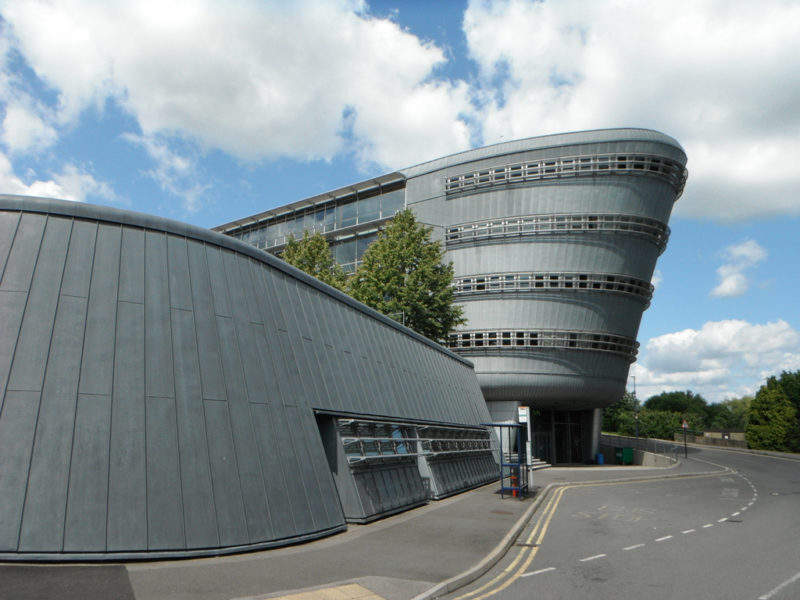
In October last year, scientists at the University of Surrey announced they had made a key nanotechnology breakthrough. Their technology – ‘intelligent’ nanoparticles that kill tumour cells but not healthy tissue – has been billed as a potential “game changer in the way we treat people who have cancer”.
The nanoparticles work by heating up to high temperatures, around 42-45°C. This simulates a local fever in the tumour, killing or weakening the cancer cells. Once they reach 45°C, they self-regulate, losing heat before they become hot enough to damage the surrounding tissue.
While the underlying technique, known as magnetic hyperthermia, is not new, it is considered an experimental treatment and has seen limited applications to date. The main problem lies with temperature control: if the nanoparticles’ temperature keeps climbing, there can be serious consequences for the patient.
Professor Ravi Silva, head of the Advanced Technology Institute at the University of Surrey, said: “If we can keep cancer treatment sat at a temperature level high enough to kill the cancer, while low enough to stop harming healthy tissue, it will prevent some of the serious side effects of vital treatment.”
History of hyperthermia
The basic premise, that heat might be used to treat tumours, has been around for thousands of years. Hippocrates, considered the father of modern medicine, wrote: “Those diseases which medicines do not cure, iron cures; those which iron cannot cure, fire cures; and those which fire cannot cure, are to be reckoned wholly incurable.” In other words, if you can’t treat the mass surgically, the next step is to try heat.
Hyperthermia in its modern incarnation began in the 1970s, when the first clinical trials got underway. A number of hyperthermic techniques were developed, including some that heated the whole body, and others that just heated the site of the tumour. These basic categories still apply today.

US Tariffs are shifting - will you react or anticipate?
Don’t let policy changes catch you off guard. Stay proactive with real-time data and expert analysis.
By GlobalDataIn essence, hyperthermia works by exploiting the difference in thermosensitivity between cancer cells and normal cells. Owing to the way tumours are structured, they are less able to tolerate heat than the cells around them. Studies have found that tumour cells grow 3-7°C warmer than adjacent normal cells when the tissue is heated.
Unfortunately, the technique has never lived up to its early promise. In 1987, one researcher wrote: “Clinical hyperthermia today is a time-consuming procedure, done with relatively crude tools, and is an inexact treatment method that has many inherent technical problems.”
Despite these roadblocks, clinical trials have continued, and hyperthermia has been used for certain cancers with some success. Since heating helps improve the efficacy of certain drugs, it is almost always used in conjunction with other treatments, such as chemotherapy or radiotherapy.
A nanomaterials breakthrough
In magnetic hyperthermia, metal nanoparticles are injected into a tumour, or delivered to the site by a magnet, and the patient is exposed to an alternating magnetic field. This magnetises the particles, creating small currents that give off heat. The cancer cells are killed or severely weakened.
Once the particles grow hot enough, they reach what is known as the Curie point. This is the point at which they lose their magnetic properties, and stop heating up.
Unfortunately, most magnetic materials have a Curie temperature much higher than the human body can withstand. In order to be suitable for use, the nanoparticles need high magnetisation, a low Curie temperature, and low toxicity.
The team at Surrey, who worked with colleagues at the Dalian University of Technology in China, developed nanoparticles with all these properties. Prepared using a specific ratio of cobalt, zinc and iron, their particles have a Curie temperature of 45.7°C. However, under particular magnetic field conditions, the temperature self-regulates to 44°C – deadly for cancer cells, but otherwise safe for use in the human body.
Dr Wei Zhang, an associate professor at the Dalian University of Technology, said: “By making magnetic materials with the Curie temperature falling in the range of hyperthermia temperatures, the self-regulation of therapeutics can be achieved. By adjusting the components as we have, we have synthesised the nanoparticles with the Curie temperature as low as 34°C. This is a major nanomaterials breakthrough.”
“It’s a very exciting development which, once again, shows that the University of Surrey research is at the forefront of nanotechnologies – whether in the field of energy materials or, in this case, healthcare,” said Professor Silva.
Applications ahead
The future for magnetic hyperthermia certainly looks promising. One clear advantage is that it heats the tumour site evenly. This gives it the edge on other forms of hyperthermia, where the tumour heating can be heterogeneous and the efficacy limited. It also has limited side effects, often no more serious than warming the surrounding skin.
As well as killing tumour cells locally, magnetic hyperthermia could one day be used to treat cancers that have metastasised. As recent studies have demonstrated, cancer cells produce large quantities of heat shock proteins (HSPs) when exposed to the heated nanoparticles. The HSPs are released throughout the body, triggering an immune response that kills other cancer cells.
Another important application is targeted drug delivery. If the nanoparticles are loaded with therapeutic agents, they should in theory both kill the cancer cells and unload the drug in the tumour site. This technique has shown great success in animal models. In one 2016 study published in Nature, combined hyperthermia-chemotherapy was used to treat tongue cancer in rabbits.
While most of the research in this field is still in the early stages, some applications have already reached the clinic. A therapy called NanoTherm, which treats brain and prostate cancers, has been approved in Germany and is pending approval in the US and the rest of Europe.
With so many research teams focusing on this area, magnetic hyperthermia is an emerging technology to watch in the years ahead.



